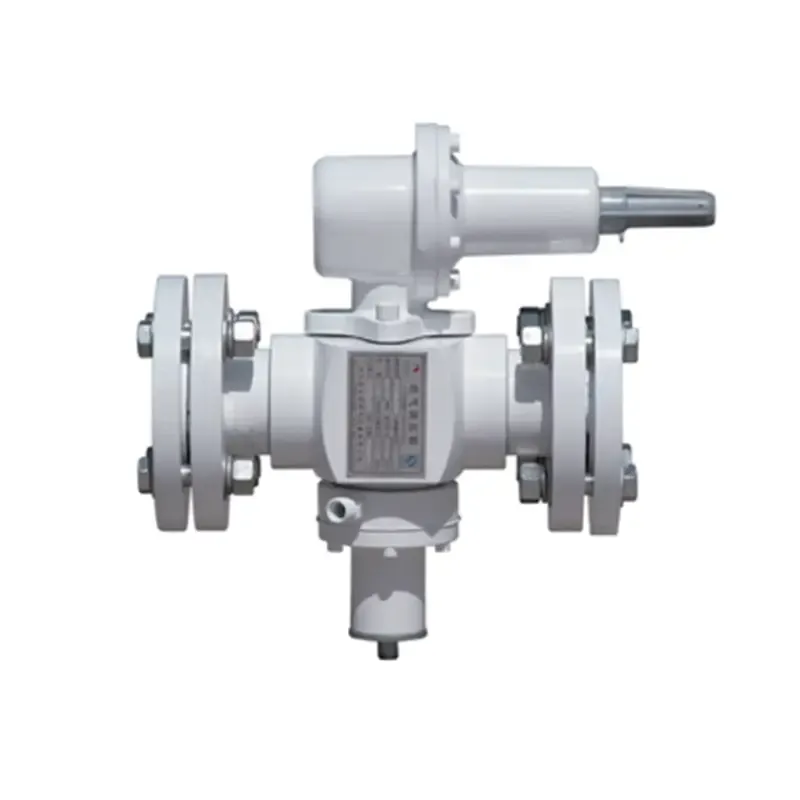
Nov . 11, 2024 13:07
Back to list
صمام الأمان
The Importance of Safety Valves Ensuring Industrial Safety and Efficiency
Safety in industrial operations is paramount, and one of the critical components that ensure this safety is the safety valve, known as صمام الأمان in Arabic
. These devices are essential in various sectors, including oil and gas, chemical manufacturing, power generation, and many others. They provide a vital safeguard against overpressure situations, which could lead to catastrophic failures, property damage, and loss of life.What is a Safety Valve?
A safety valve is a mechanical device designed to automatically release pressure from a system when it exceeds a predetermined limit. It serves as a last line of defense to protect equipment and personnel from the dangers associated with overpressure. When pressure builds up beyond acceptable levels, the safety valve opens, allowing excess gas or fluid to escape and reducing the pressure within the system to safe levels.
Types of Safety Valves
There are several types of safety valves, each suited for different applications and operating conditions
1. Spring-Loaded Safety Valves The most common type, these valves use a spring mechanism to hold the valve closed. When the pressure exceeds the set point, the spring compresses, allowing the valve to open.
2. Pilot-Operated Safety Valves These valves are controlled by an external pilot valve that senses the pressure in the system. They offer higher capacity and are often used in larger industrial applications.
3. Deadweight Safety Valves These valves rely on the weight of the valve itself to maintain closure against system pressure. Once the pressure exceeds the weight threshold, the valve opens.
صمام الأمان

4. rupture Disks While not a valve in the traditional sense, rupture disks are often used in conjunction with safety valves to provide an additional layer of protection. They act as a one-time-use pressure relief device that bursts at a predetermined pressure.
Functioning and Mechanism
The functioning of safety valves is based on fundamental principles of physics. When the pressure in a system reaches a critical level, it exerts force on the valve's disc. The design of the valve ensures that this force will overcome the spring tension or any opposing force holding the valve closed. Once the valve opens, the pressurized contents can escape, effectively reducing the pressure in the system. Once the pressure falls back below the set limit, the valve reseals and returns to its normal operating state.
Applications of Safety Valves
Safety valves are ubiquitous in industries where pressure vessels or piping systems are used. In the oil and gas sector, for example, safety valves prevent excessive pressure build-up that could lead to blowouts. In chemical processing, they protect reactors and storage tanks from bursting. In boilers and steam systems, they ensure that steam pressure remains within safe operational bounds, preventing catastrophic failures.
Maintenance and Compliance
For safety valves to function correctly, regular maintenance and testing are crucial. Many industries follow strict guidelines set by organizations such as the American Society of Mechanical Engineers (ASME) and the Occupational Safety and Health Administration (OSHA). These regulations stipulate routine inspections, testing of set pressures, and replacement of worn components to ensure that safety valves operate effectively when needed.
Conclusion
In summary, safety valves (صمام الأمان) are vital components in various industrial applications, providing essential protection against overpressure situations. Their ability to automatically relieve excess pressure not only safeguards equipment but also ensures the safety of personnel working in potentially hazardous environments. As industries continue to evolve and innovate, the importance of maintaining and properly utilizing safety valves will remain a central focus in ensuring operational safety and efficiency. By prioritizing these devices in safety protocols, companies can significantly reduce the risk of accidents and enhance overall workplace safety.
Next:
Latest news
-
Safety Valve Spring-Loaded Design Overpressure ProtectionNewsJul.25,2025
-
Precision Voltage Regulator AC5 Accuracy Grade PerformanceNewsJul.25,2025
-
Natural Gas Pressure Regulating Skid Industrial Pipeline ApplicationsNewsJul.25,2025
-
Natural Gas Filter Stainless Steel Mesh Element DesignNewsJul.25,2025
-
Gas Pressure Regulator Valve Direct-Acting Spring-Loaded DesignNewsJul.25,2025
-
Decompression Equipment Multi-Stage Heat Exchange System DesignNewsJul.25,2025

